Project Name: Plastic Sea
Partner: Xueping Wang
Final Creation:
https://www.youtube.com/watch?v=vIfGPVLn5hM&feature=youtu.be
Context and Significance
Days before we began our project I was watching a Youtube video 50 Minutes to Save the World ( link). It shocked me so much because I didn’t realize how serious plastic pollution in the oceans is nowadays. I used to think it’s the factories who should be blamed most, and without the industrial waste, the situation of our ocean can’t be such bad. But this video made me realize that we, as a consumer, are destroying our ocean every time we buy the plastic product. We won’t realize the severity of plastic pollution in the oceans until we see the wildlife has died. Life underwater is easily killed because of these plastic products. So we searched online for some interactive art about wildlife protection. One of them is called Liberate Life from the Wildlife Exhibition ( link), where people can open the cage with their hands and the animals projected on the wall will automatically get out of the cage. For me, it is an interesting form of interaction. The audience can physically participate in the conversation, but the reaction you receive is random. In this video, for example, the result can be a rabbit, a giraffe or an elephant. Based on that, we also wanted to build our project based on randomness.
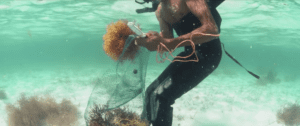
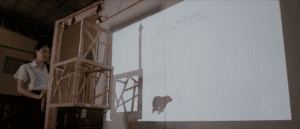
There are two parts in Plastic Sea. One is the “vending machine” and the other is “the ocean”. In the vending machine, there’re four plastic bottles. We used a laser-cut round board to represent the ocean. In the center of the board, there’s a “blenched coral” hanging down four different marine animals—— the turtle, seahorse, shark, and dolphin. If people randomly choose to use one of the four bottles, one animal will die ( be static in the air); if people pick another bottle randomly, the second animal will die …… and so on. ( Actually, we did some research and found that the turtle is the most sensitive to marine pollution, so we decided that the turtle is supposed to be the first one to die). Therefore, the user will have a continuous interactive experience, in which the device will make the corresponding reactions based on their random choice.
We consider our project unique and significant. It is an educational device. it can not only be used in schools, but also on the streets. If it’s linked to the vending machine, people will realize how every decision they make will impact the health of our oceans. Whenever they pick the plastic bottles rather than other ones made of recycling material, this device will be activated.
Conception and Design
Elements and materials we chose:
(1) Breadboard * 2
(2) Arduino UNO *2
(3) Gear motors * 4
(4) H bridge *2
(5) M/F, F/F wires * N
(6) String
(7) Clay
(8) Laser-cut animals, corals, trapezoid boxes, and the round board
(9) FSR 406 sensors * 4
(10) Plastic bottles * 4
Decisions we made when choosing elements and materials:
(1) Initially, we chose the weight sensors. But it has to be suspended, which is hard to realize in our device. So we used FSR406, which is a force sensor with a bigger area when other force sensors.
(2) We changed the DC motors to the gear motors. The gear motors rotate more slowly, can it’s easy to control. Also, the string won’t slip away easily.
(3) We made gears to fix the strings with 3D printers, but given the errors, we used the clay instead.
Fabrication and Production
We chose to laser cut most of the materials.
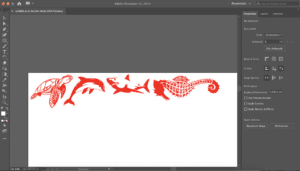
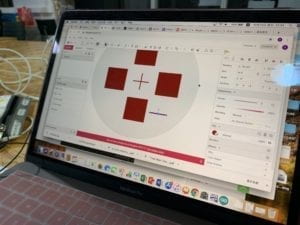


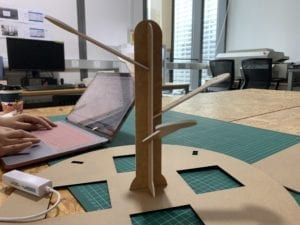
Our original idea is to let people remove the litter out of the box, and then the animal will become alive and begin to bounce. As the sensor value changes, the motor will begin to rotate.
- During the user test, however, we found some problems with the original ideas:
– As for its meaning, people don’t know what to do. They thought it’s an angling machine or some game. Although we built an artificial coral in the center with the white plastic board, they didn’t notice the round board means the ocean. Even after they understand how it works, they were kind of confused about the reaction of the animals. In general, its interaction is obscure.
– As for its function, the sensor at the bottom of the box didn’t work well. Because the animal itself would change the sensor value, too.

- Thanks to Prof. Marcela, Andy, Eric, and Jingtian, we changed our original ideas and made some improvements:
(1) Instead of using the boxes inserted in the board, we moved all the sensors out of the device and built a vending machine. So that people can mind their behavior as a consumer more easily and more directly.
(2) We used the bouncing effect to show the animals alive.
(3) We painted the board black and blue, which means the polluted ocean. Also, we added some decorations and instructions.
(4) Some people thought the bottles are in a rubbish bin, while others thought it’s a vending machine. So we made it clear.

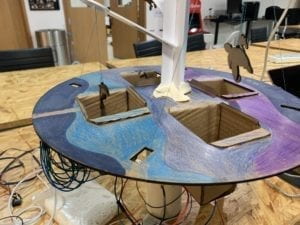

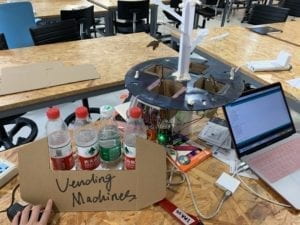
After we finish the visual part, we began coding. The most difficult part is the logic of randomness. No matter which bottle is picked, the turtle will “die” first. When the participant puts back the bottle, the turtle actually won’t come back to life. We asked Jingtian for help and created two variables: DeathAmount and DeathExe. Also, we learned how to use a timer to count the time and put the bouncing of the animals in a small loop.
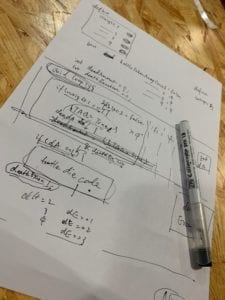


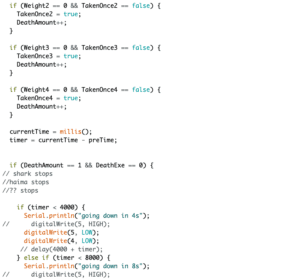
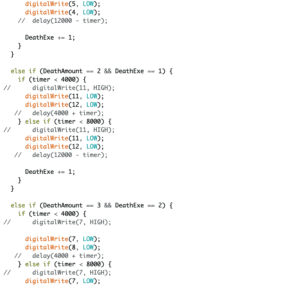
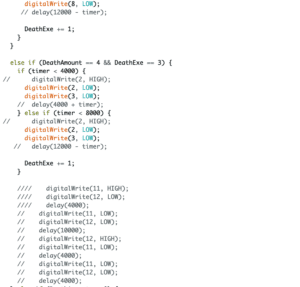
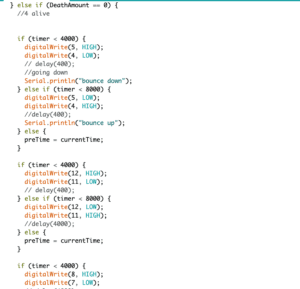
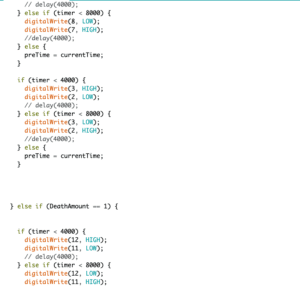
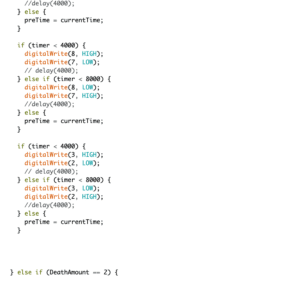
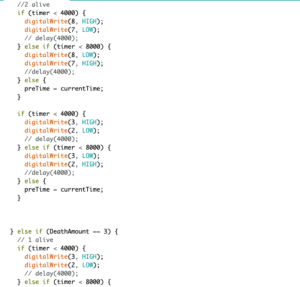

Conclusions
Finally, the project works as we expected. This is a precious experience for me. To make it more interactive, you should always put yourself into others’ shoes to see if they will understand you correctly. After all, things obvious to you may not necessarily obvious to others. That’s why the user testing session is really important for us.
If time permits, we still need further improvements: (1) Considering the security, the movement of the animals is very small, so it’s hard to observe. (2) Since the device is big, it’s hard to pay attention to both the vending machine and the “ocean” at the same time. (3) We can add more bottles made of other materials, so the participants can make their own decision to choose plastic ones or not. The results will be more obvious and easier to understand.
I remember people are engaged in this project, and they were surprised when they found it a vending machine, and that how the animals are going to react to their consumer behavior. After seeing the polluted ocean, the blenched corals, and the dying animals, we hope every participant will be more aware of our human impacts on the plastic pollution of the oceans and make further consideration about how we are going to protect our environment.
Big thanks to all the professors and fellows who have helped us!!!
Reference:
– https://www.youtube.com/watch?v=7mvX2XYQSNk
– https://pixabay.com/vectors/shark-jaws-sea-fish-ocean-white-305004/
– https://pixabay.com/vectors/animal-fish-ocean-sea-seahorse-2027685/
– http://poofycheeks.com/2019/05/sea-turtle-svg-dxf-png/
– https://learn.adafruit.com/force-sensitive-resistor-fsr/using-an-fsr
– Class 10 – Thursday Oct 10 – DC Motor Control (Direction) / Stepper Motor Control and High Current Loads
– https://www.creativeapplications.net/python/aweigh-open-navigation-system-inspired-by-insect-eyes/
– http://www.smartshanghai.com/event/55029